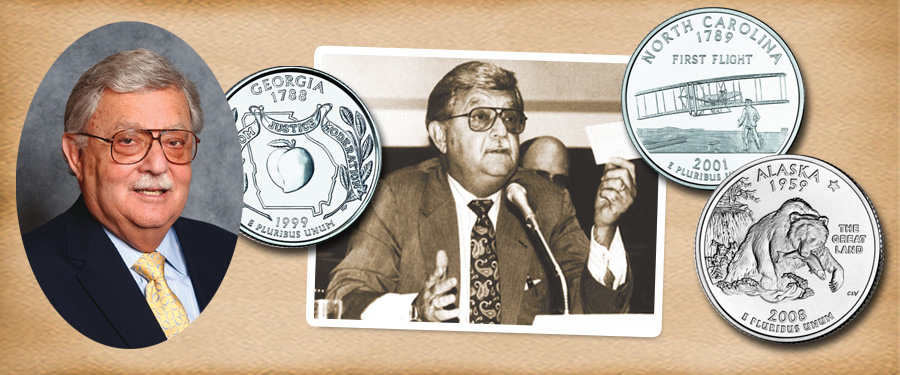
Over the years the United States Mint has issued many commemorative coins. There was the “Classic” series of commemoratives that were struck between 1892 and 1954. There were the Bicentennial coins of 1776, featuring special reverse designs for the quarter, half dollar and dollar. Starting in 1983, the Mint began issuing many new coins commemorating various events and historical happenings with some struck in gold, others in silver, and sold at a profit to the Mint. By 1995 many different issues had appeared on the market, priced well over their intrinsic metal value and some in limited editions, promoted as rarities. However the numismatic market did not support these high prices and by 1993 many could be acquired on the secondary market at considerably less than their original cost, sometimes less than 50% of the original cost. One side effect of this was that it even caused the prices of classic commemoratives to drop in the numismatic market, even though these earlier issues had been avidly collected for decades.
A committee was formed to investigate the situation. I was a part of a delegation representing numismatic interests that was invited to a hearing held by the Congressional Banking Committee in 1995 chaired by Representative Castle of Delaware. Each member of the numismatic delegation spoke of how the excess prices and abundance of new issues from the Mint were negatively impacting the hobby and discouraging collectors. After our testimony, I was asked by Representative Castle, if I had any suggestions to improve the situation. I responded that many collectors started collecting coins from circulation, filled albums with different dates and mints, and developed an interest in pursuing numismatics. Often this early interest would expand to earlier material than that found in daily change. I recommended to Castle’s committee that the Mint should start a program issuing a commemorative quarter honoring each state in the Union. These could be issued in the order of their admission to the United States and include the date they joined and graphics including the capital and some product or event that each state is known for. But, I felt it was most important that these coins be released at face value, with no premium attached. In this way a coin with historical significance could be collected without a prohibitive cost, by anyone who could find the pieces in circulation. It would encourage novices, entice collectors back into the market and keep the hobby alive and well.
Castle loved the idea. An act of Congress adopted the concept and the first five coins, with reverses honoring Delaware, Pennsylvania, New Jersey, Georgia and Connecticut, appeared in circulation in 1999. Washington quarters from 1932 to 1998 would still circulate with Washington’s portrait on the obverse and the eagle on the reverse, but now pocket change would include these Statehood quarters. Interesting and historical coin designs would now be part of daily circulation. But apparently this has not happened as planned.
When I search my daily change today, it seems that the earlier Washington/eagle reverse quarters are not being replaced by the Statehood quarters issued from 1999-2008, According to Mint records, tens of billions of the State Reverse quarters were struck, however the distribution seemed to lack any emphasis by the Mint,
Federal Reserve or local banks. Where are all the State Reverse quarters? They seem to be rare in circulation, even a decade and a half after the first ones were issued. It is a mystery to me as they are the same size as the older quarters and still work in vending and slot machines. Are they still in storage, with the billions of earlier Washington quarters piled on top? (Of course, many quarters made between 1932 to 1964 were melted as their silver value exceeded their face value and are unlikely to be found in commerce today).
I suggest that readers start reviewing their change and see how many Statehood quarters are found. Additionally, for the State quarters that are located, check to see which states are most represented. Are there some State Reverse issues that show up a lot more than others? Are they more likely to be found in certain locations? It would be interesting to find answers for these questions.
I am aware that recently many major dealers have advertised Statehood quarter sets — 84 different pieces from various U.S. Mints — in Mint State condition for a for a few pennies over face value. They were able to find them, but why don’t I see them all the time in general commercial use? So, as I asked in the beginning of this article: Where are the Statehood quarters and why can’t they be readily found in circulation? A real 21st century mystery.





